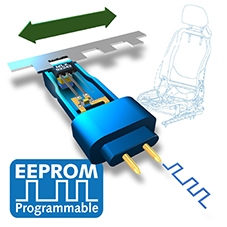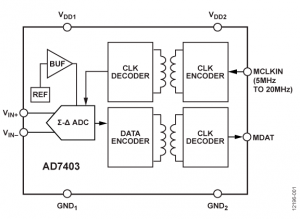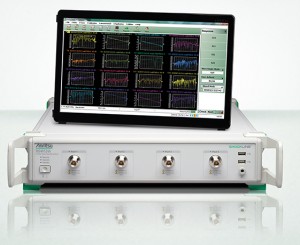 Melexis Technologies has introduced a Hall-effect switch device with an integrated voltage regulator and on-chip non-volatile memory. On-chip EEPROM is used to enable the various tolerances that need to be defined for a specific application to be set, via the device’s Vdd pin, which can be readjusted before finally being locked.
Melexis Technologies has introduced a Hall-effect switch device with an integrated voltage regulator and on-chip non-volatile memory. On-chip EEPROM is used to enable the various tolerances that need to be defined for a specific application to be set, via the device’s Vdd pin, which can be readjusted before finally being locked.
“The range and resolution of programmable magnetic thresholds and thermal sensitivity coefficients allows the sensor, working in conjunction with a magnet, to easily implement a ferrous metal proximity-sensing system,” says the supplier.
It says the temperature compensation programmability of the MLX92242 means it can be used with all kinds of magnets, including the low-cost ferrite materials. It supports two-wire rather than a three-wire implementation, only using the Vdd and GND pins, but still providing all the necessary diagnostic capacity to respond to malfunctions.
“The advantage of this is that far less wiring/cable harnessing is needed, allowing deployment into confined spaces and reducing the overall weight in applications where this could otherwise be a disadvantage. The voltage range, which covers 2.7V to 24V, enables design flexibility to be maximised,” says the company.
Likely automotive applications include seat-belt latch detectors and seat position sensors. Designed for automotive and industrial environments, the device has a very high resilience to electro-static discharge (ESD) , with 8kV human body mode ESD compliance, and operational temperature range spans from -40°C to 150°C.
Reverse supply voltage and under-voltage lockout protection mechanisms are incorporated.
It is supplied as either a three-pin TO-92-Flat for through-hole mount assembly or in three-pin TSOT for surface mount assembly.
 Analog Devices is claiming to have the industry’s highest-accuracy isolated sigma-delta (∑Δ) data converter for DC and AC current and voltage measurement.
Analog Devices is claiming to have the industry’s highest-accuracy isolated sigma-delta (∑Δ) data converter for DC and AC current and voltage measurement.

